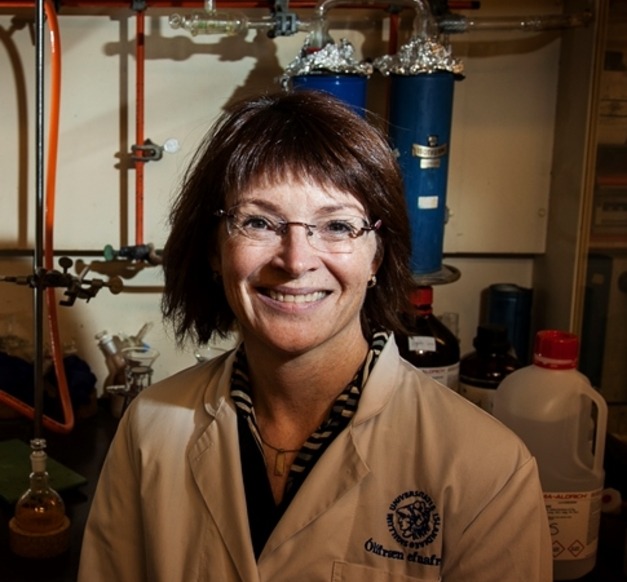This subject was an irresistible research project as it connects classic inorganic chemistry with drug development and the public health care system,” says Sigríður Guðrún Suman, Associate Professor at the School of Engineering and Natural Sciences, who has developed an antidote for cyanide poisoning for emergencies. Cyanide is an important substance in industry. “It is, for example used in mining, as an insecticide and for military purposes. It has also come to light that cyanide can be found in all kinds of smoke, e.g. smoke due to house fires where it is produced due to imperfect burning of chemicals that contain nitrogen,” explains Suman.
She also points out that research shows that people who suffer from smoke inhalation recover sooner and better if treated for cyanide poisoning and carbon monoxide simultaneously.
“However, the cyanide is fast and it is often too late to treat people in the Emergency Room. The treatment currently available needs to be administered intravenously, it is costly, and requires trained staff,” says Suman. There was thus a need for treatment where the drug could be administered in small does, for example with a pre-filled pen.
Suman, who joined the staff at the University of Iceland in 2012 after a long stay in the United States, has been working on this project for several years; and received funding from the National Institute of Health, as well as other grants. “The Institute has been looking for ways to protect people from lasting biological injuries after inhaling cyanide, chlorine and nerve gas. I read upon how cyanide spreads in the body and where it ends up, and concluded that my idea was a good one,” says Suman, but her project was in second place in the Applied Science Prize 2013.
Sigríður Guðrún Suman
Research results show that the antidote developed by Suman does not cause poisoning in the cells, and Suman has submitted a patent application for her invention in collaboration UI’s committee for intellectual property and Landspítali – University hospital with a view to selling the invention to pharmaceutical companies.

Research results show that the antidote developed by Suman does not cause poisoning in the cells, and Suman has submitted a patent application for her invention in collaboration UI’s committee for intellectual property and Landspítali – University hospital with a view to selling the invention to pharmaceutical companies.
The importance of this invention is evident. “The ramifications of cyanide poisoning are symptoms similar to that of Parkinson’s disease so the question is: if the choice is between those kinds of symptoms or detoxification in a muscle at the scene of the accident; which do people prefer? The overall value is improved health services at the accident site for everyone,” says Suman.


